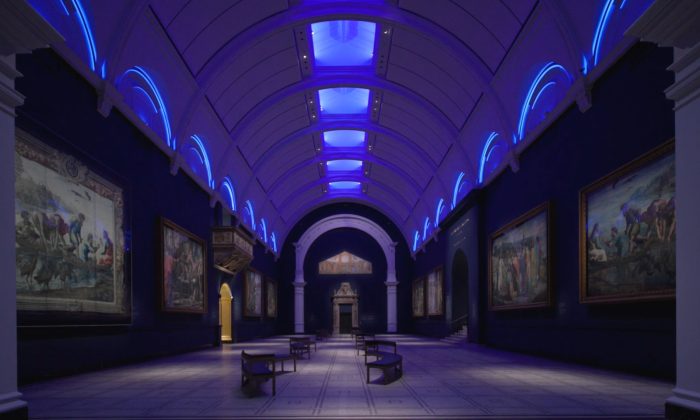
Column: The cost of good lighting design & the cost of not using it
Monthly Column By Zerlina Hughes
Historically, good lighting design would often fall victim during the costing process of a project, either by not being considered early enough in the cost plan or being allocated a piecemeal allowance – or, if it escaped one of those two fates, by being one of the first hits on the dreaded VE (value-engineering) list, with lighting design often considered as ‘nice but not essential’.
More recently, however, although budgets are tight, we are finally seeing attitudes begin to shift. Expert designers and architects have always understood the added value which highly considered lighting can bring to a project, appreciating that the way light renders a space and its materiality can make or break a project. We’re also now finding that clients increasingly understand the wealth of additional benefits good lighting design offers.

Lighting plays a vital role in adding flexibility to a space. It can be transformational in terms of zoning, layout and functionality – but also in terms of mood setting. The key high-cost item is allowing for a lighting control system. This future-proofs the system as the programming of scenes can completely change and adapt to new GAs (general arrangements) without the need for much more long-term expense in the form of new lighting infrastructure.
The next essential specification would be a range of luminaires offering multifunctionality. We would perhaps look for a range of fittings that provide an architectural wrap – providing a soft luminosity to both the horizontal and vertical planes. This could be specified with a dynamic white or colour-mixing function to allow transformation a from working space to event/social mode. We may then apply focusable fittings with the ability to change lenses from narrow to wide beam and from soft to a more defined edge, where highlights/ tasks are required. Because of their adjustability, these again could respond to any refurbishments or changes in the GAs – another long-term gain.
Another wise investment is to specify a manufacturer who will guarantee an upgrade in component parts eg the LED light engine for 20-25 years, way beyond the old standard of 5 years, ensuring the hardware is retained and any upgrades are internal. This model is being promoted by more manufacturers and is worth interrogating as it also usually means sustainability criteria – including provenance of materials and recycling-reuse – is also high.
The most important factor of all of course should be the quality of the light. Cutting cost by compromising on colour rendering is pure folly. Poor CRI (Colour Rendering Index) of less than 85 will render a scheme’s colour and finishes poorly and lessen the impact of the money spent on surface materials and furniture. It also produces a sub-optimal environment for those working or playing in that space. We’ve all experienced the visual disturbance or even the headache-inducing quality of a green or pink tinge or the muddiness produced by a poor light source. Poor lighting can make an only-just adequate scheme look truly terrible.
We specialise in lighting for art and artefacts, so it’s essential we render colour as the artist intended. We interrogate the colour rendering and colour spectrum of samples prior to procurement, specifying the highest colour rendering +95. We also use this knowledge outside of the cultural sector to ensure our schemes deliver high quality light.
It’s often been said that good lighting can save a scheme. Good lighting can remedy a poor finish and elevate texture and colour. What’s also true is that good lighting can make a beautiful scheme sublime. Employing a lighting designer and allowing them to specify quality product will deliver beautiful, flexible, sustainable schemes with longevity for decades to come. One lighting scheme can equate to four refurbishments. The added value is surely a no-brainer!
Zerlina Hughes, Founder & Creative Director at Studio ZNA




